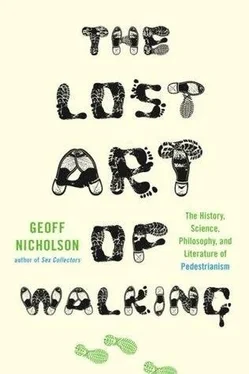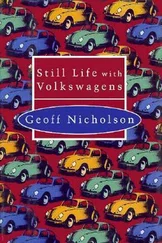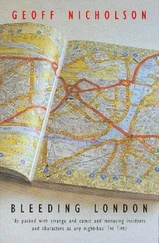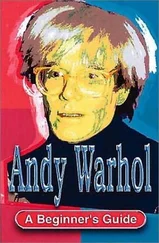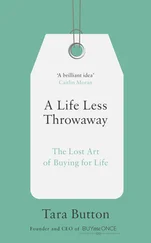The oddest walking-related show tune I know is Irving Berlin’s ‘My Walking Stick’ of 1938, written for the movie Alexander’s Ragtime Band , which is about how very attached the protagonist is to his walking stick. I say ‘he’ because it’s quite evidently a man’s song even though in the movie it’s sung by Ethel Merman, who performs it as a male impersonator. The lyrics say you can take his hat, his tie, his spats, and he can get by just fine, but take away his walking stick (which for the sake of a rhyme sometimes becomes a cane) and he’ll go insane. If he’s down lovers’ lane and he’s caught, then without it he’s nought. It was a different age.
♦
In October 1938 the Times of London ran a headline that read ‘While dictators rage and statesmen talk, all Europe dances — to The Lambeth Walk’. It was referring to a song of that name, part of the hit stage show Me and My Girl , book and lyrics by Douglas Furber and L. Arthur Rose and music by Noel Gay.
To be fair, the Lambeth Walk is as much a dance as it is a way of walking, a jaunty strut that involves linked arms and raised knees, and occasionally shouting ‘Oi!’ Traditionally it’s been done by lovable, heart-of-gold, salt-of-the-earth Londoners. The song says ‘any time you’re Lambeth way, any evening, any day, you’ll find them all doing the Lambeth Walk’, though this information is inevitably out-of-date.
The song rapidly became a hit and a political cause. King George VI and Queen Elizabeth went to see the show and loved it, and the song was even popular with some people in Germany, so popular that Noel Gay was asked to sign a document declaring that he had no Jewish blood in him. He declined. In 1939 this led to the Lambeth Walk being denounced by the Nazi Party as ‘Jewish mischief and animalistic hopping’, though to a rational person it looks like none of these things. In due course, in 1941, a short English newsreel propaganda film appeared that went by various names including Lambeth Walk — Nazi Style . It filched footage from Leni Riefenstahl’s Triumph of the Will and edited it so that Hitler and his troops appeared to be doing their own ridiculous, militaristic version of the Lambeth Walk. The film’s provenance is mysterious, and it’s most convincingly credited to Charles A. Ridley, though that’s a name that’s otherwise disappeared from film history. It’s said that Goebbels was so infuriated when he saw the film that he ran out of the room literally kicking and screaming.
Lambeth Walk is the name of a street as well as a song, and I went there, following another songline. According to the lyric, everything there is free and easy, and it’s a place where you can do as you darn well pleasey. The song asks:
Why don’t you make your way there,
Go there, stay there?
I could think of several reasons. No doubt lovable, heart-of-gold, salt-of-the-earth Londoners still live in the area, but none of them was in evidence on the day I went walking there. In fact there were few people on the street at all.
Lambeth Walk was not thriving, and it seemed to be in trouble. A place by the name of Denby Court was a block of so-called sheltered housing. This is where the English authorities place the old, troubled, disabled, and generally vulnerable. The people in Denby Court weren’t just sheltered, they were incarcerated, behind walls, bars, and metal fences, protected by metal spikes and closed-circuit TV cameras. No doubt it was a good thing that the inhabitants were protected, but to need so much protection suggested that they were permanently under siege, living in constant terror. What monsters walked this street?
On the day I was there, there didn’t seem to be much to fear, unless you count the kid on a bike who did an aggressive wheelie a couple of feet in front of me, as if to say…well, I’m not sure what — that a kid on a bike owns these mean streets, that I was obviously a stranger there and I’d better watch myself, that I must be a sucker to be walking rather than riding a bike — who knows, but he was definitely saying something.
Perhaps he thought I had no reason to be there, and in a way he was right. There was nothing to see or do or buy. The Lambeth Walk Carpet Shop was boarded up, as was Lambeth Walk Seafoods, its sign smashed to pieces. Something called CORAS, the Colombian Refugee Association, seemed still to be in business, even though it was closed and there was a serious-looking metal blind rolled down over the front. Joy’s Mini Market’s ( sic ) was open for business, and a black woman, possibly Joy, was sitting on a box outside. I wasn’t going to do anything so crass as ask her about the dance, but I did try to make eye contact, and she was having none of it.
In fact Lambeth Walk has some history of economic failure. In the nineteenth century there were two wells in Lambeth Walk, one called Nearer, one called Farther, trying to sell water for its medicinal properties. The wells hadn’t lasted long and now there was no sign they’d ever been there. Finally I came to a bleak little courtyard where the owners of a couple of market stalls were just closing up for the day — one had been selling household products in industrial-sized packs, the other selling toys. And painted on the wall above them, high enough to deter all but the most determined taggers, was a faded mural showing a jolly man and woman with knees raised and arms linked doing, there was no doubt about it, the Lambeth Walk.
♦
It might have been tempting, on these songline walks of mine, to wear a personal stereo and have the relevant song playing as I walked. For several reasons, I didn’t. One was simply the issue of irritation: to have the same song playing over and over again might have driven a person insane. More crucially, as I walked I didn’t want to be insulated from the sounds of the environment. The things you hear when you walk are every bit as important as the things you see, or for that matter touch, taste, and smell. There’s also the safety issue. I wanted to be able to hear the approaching car, the ominous footsteps, the cries of ‘White man!’ Perhaps I was being old-fashioned.
There’s at least one generation, probably several, who can’t imagine what it’s like not to have music that’s portable and always available, via the Walkman and its various higher-tech developments through to the iPod, known in some quarters as the ‘isolation Pod’.
The name Walkman is one of those not quite English words belonging to some global tongue, devised by the people at Sony, who first marketed the personal stereo in 1979 in Japan. Toshiba had a rival product called the Walky. Walkman strikes me as a very unsexy word, and you’d think Sony might have called it the Runman or the Jogman, but the early versions were so sensitive that if you ran or jogged, or even walked too speedily, the playing mechanism faltered.
At the risk of sounding like an old fogey, I can not only remember a time before the personal stereo, I can remember the first one I ever saw. It was in London, and it was 1979, before the Walkman went on sale in England. I was working in a bookshop, behind the counter with a couple of other assistants who were big music fans, and a young Japanese man came into the store wearing a Walkman. It was as strange as seeing somebody with a jetpack on his shoulders. We had a halting conversation in which we tried to ask him what the Walkman was like. We couldn’t believe that the sound quality could be very good, and the Japanese boy very definitely wasn’t going to offer his earpieces for us to sample. We didn’t blame him. We didn’t expect it any more than we’d have expected him to offer us the use of his jetpack.
At least one of us said it would never catch on. Although it was easy enough to see the advantages of being able to take your music with you anywhere, the notion that life required a personalized, prerecorded sound track was a new and an unexplored one. We had no idea of the extent to which the personal stereo would subsequently be used to provide background music as a form of editing, something filmic, a way of combining sound and vision, manipulating what you see and hear, to make yourself believe you’re living in a movie.
Читать дальше
